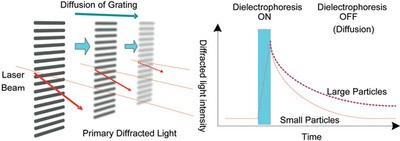

The resolution of DIA systems is also unbeatable: smallest size differences within the micrometer range are reliably detected and multimodal distributions are resolved without fail. The CAMSIZER® P4, for example, is designed to detect every single particle of a sample the model CAMSIZER® X2 has a detection limit of 0.01 % for oversized particles. An essential characteristic of DIA is the extremely high detection sensitivity for oversized grains. Parameters to describe the particle shape include sphericity, symmetry, convexity and aspect ratio. However, this is just the mean value which implies that some of the apertures can be even larger. the average real aperture size lies between 95 and 105 µm). The average real aperture size of a 1 mm sieve, for example, is permitted to deviate about ☓0 µm, for a 100 µm sieve it is ±5 µm (i.e. It should also be taken into account that the aperture sizes of new standard-compliant sieves are also subject to certain tolerances. The most common sources of errors are overloading of the sieves (blocking of sieve apertures, too coarse results) old, worn or damaged sieves (too fine results), or errors in data transfer. The processing steps of sieve analysis are initial weighing, 5 – 10 minutes sieving, back weighing, and cleaning of the sieves. Automation of the procedure is hardly possible which makes it rather time-consuming. A standard sieve stack consists of a maximum of 8 sieves which means that the particle size distribution is based on only 8 data points. The resolution of sieve analysis is limited by the number of obtainable size fractions. Each sieve is weighed, and the volume of each fraction is calculated in percent by weight, providing a mass-related distribution. Sieve analysis is carried out up to a point where the sample mass on the respective sieves no longer changes (= constant mass). Hence, sieve analysis is a technique which measures particles in their preferred orientation with a tendency to determine mostly the particle width. For lenticular particles, the size determined by sieve analysis would be a value between the thickness and the diameter of the lense, as the particle is oriented diagonally towards the sieve aperture (see figure on the right). Taking cubic particles as a model, this corresponds to the edge length of the cube. Ideally, the particles pass the smallest possible sieve aperture with their smallest projection surface. As a result, the particles are distributed to the sieves in the stack (fractions) according to their size. The stack is clamped to a sieve shaker and set into vibration for usually 5 – 10 minutes. A sieve stack consists of several sieves with increasing aperture size stacked upon each other and the sample is placed on the uppermost sieve. Sieve analysis still is the traditional and most commonly used method for particle size determination.


 0 kommentar(er)
0 kommentar(er)
